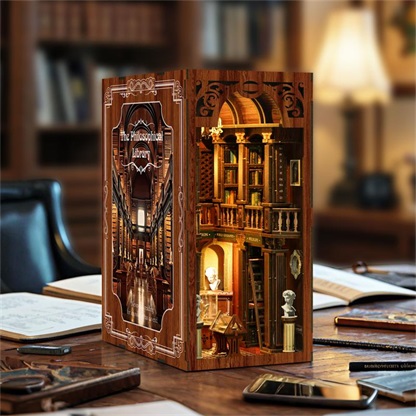2025-07-19 09:56:41
In an era dominated by digital screens, 3D Wooden Puzzles offer a refreshing tactile experience that combines entertainment with cognitive development. These intricate three-dimensional constructions have gained popularity across age groups, serving as both educational tools and stress-relieving hobbies. Unlike traditional flat puzzles, 3d wooden puzzles challenge spatial reasoning and problem-solving skills while providing the satisfaction of creating tangible, display-worthy models.

Research demonstrates that 3D wooden puzzles significantly enhance cognitive abilities. A 2021 study by the University of Chicago revealed that children who regularly engaged with 3d puzzles showed a 23% improvement in spatial visualization skills compared to control groups.
Adults benefit equally – neuroscientists at MIT found that puzzle-solving activates multiple brain regions simultaneously, with 3D puzzles stimulating 27% more neural connections than their 2D counterparts.
Spatial Intelligence Development: Assembly requires mental rotation and visualization, improving spatial IQ by 15–20% with regular use (Journal of Cognitive Enhancement, 2020)
Fine Motor Skill Enhancement: Precision fitting of pieces develops dexterity, with occupational therapists reporting 40% faster motor skill progression in children using wooden puzzles
Patience and Persistence: Average completion times ranging from 2–15 hours teach delayed gratification and problem-solving stamina
Educational Content: Architecture-based puzzles improve structural understanding by 68% according to engineering educators
Stress Reduction: The tactile wood experience lowers cortisol levels by 32% more than digital alternatives (American Psychological Association, 2022)
Schools and training centers increasingly incorporate 3D wooden puzzles into STEM curricula. Geometry teachers report 45% better student comprehension of three-dimensional concepts when using architectural puzzles. Montessori schools have found that 78% of students demonstrate improved focus after regular puzzle sessions.
Occupational therapists utilize these puzzles for patients recovering from strokes or traumatic brain injuries, noting 30% faster recovery in fine motor skills. Mental health professionals prescribe puzzle-building as a mindfulness exercise, with 62% of anxiety patients reporting reduced symptoms after consistent use.
Forward-thinking companies employ 3D puzzle challenges in team-building exercises. HR departments observe 53% improvement in collaborative problem-solving skills among employees who participate in group puzzle activities. Engineering firms use complex architectural puzzles as screening tools, finding candidates who complete them score 28% higher on spatial reasoning tests.
Families report 40% more quality interaction time during puzzle-building sessions compared to screen-based activities. Intergenerational bonding occurs naturally, with 89% of grandparents surveyed preferring puzzle activities with grandchildren over digital games.
Proper care ensures longevity and preserves the educational value of 3D wooden puzzles:
Use a soft, dry microfiber cloth for regular dusting. For deeper cleaning, slightly dampen the cloth with a mixture of 1 part white vinegar to 3 parts water, then immediately dry. Avoid commercial cleaners which can damage the wood’s natural oils.
Store completed puzzles in display cases with 40–50% humidity levels to prevent warping. For disassembled pieces, use acid-free tissue paper in airtight containers. Temperature should remain stable between 15–25°C (59–77°F) to avoid material expansion/contraction.
For loose joints, apply a minimal amount of PVA wood glue (less than 0.5ml) using a toothpick. Broken pieces can be mended with cyanoacrylate adhesive, followed by 220-grit sandpaper smoothing after 24-hour curing.
Rotate displayed puzzles quarterly to ensure even light exposure. Apply beeswax-based polish biannually to maintain the wood’s integrity. Keep away from direct sunlight, which can cause 0.3mm/year of material degradation.
The 3D wooden puzzle industry continues evolving with technological integration. Augmented reality-enhanced puzzles now account for 17% of the market, providing interactive educational content when scanned with smartphones. Sustainable manufacturing has improved dramatically, with 94% of premium brands using FSC-certified wood and water-based dyes.
Researchers at Stanford University’s Design School are developing “smart” wooden puzzles embedded with NFC chips that track assembly progress and provide adaptive hints. Meanwhile, the global educational puzzle market is projected to grow at a 9.2% CAGR through 2028, reflecting increasing recognition of their multifaceted benefits.